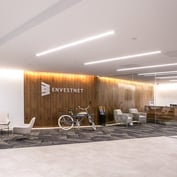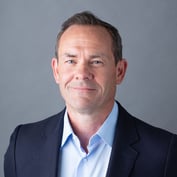What You Need to Know
- The competitive barrier that has traditionally existed between the plan advisor market and the wealth management space is blurring.
- The retirement plan marketplace is being propelled by significant tailwinds, offering more incentives for wealth-focused advisors.
- Startup retirement plans may not generate significant revenue initially, but it won't take long for the assets start to add up.
Envestnet’s 2023 Elevate conference just wrapped up in Denver, and among the many product enhancements and partnerships revealed this week by the firm is a new integration with Empower, one of the U.S.’s largest retirement plan service providers.
During the conference’s opening keynote address, Envestnet CEO Bill Crager took a few minutes to highlight the importance of the collaboration, explaining that Empower will integrate its administration technologies and asset management capabilities with the Envestnet ecosystem.
The ensuing partnership will expand both firms’ distribution opportunities, Crager said, while also providing a powerful solution for wealth managers who have traditionally shied away from serving plan sponsors and participants.
By leveraging Envestnet’s existing retirement plan service support capabilities and the new Empower integration, Crager said, wealth managers who lack expertise in the world of workplace retirement plans can deliver a high-quality, affordable and profitable service to their business owner clients — and their employees.
In a subsequent interview with ThinkAdvisor, Envestnet head of retirement Sean Murray echoed Crager’s optimistic outlook. He also warned that wealth advisors who have traditionally referred out 401(k) plan business today have a strong and growing incentive to rethink that approach.
As Murray spelled out, a growing number of retirement plan advisor aggregators — firms such as Captrust and SageView — are busily building very capable wealth management businesses themselves. As a result, the competitive barrier that has traditionally existed between the plan advisor market and the wealth management space is blurring, and it may no longer make a lot of sense for wealth advisors to reflexively refer out all 401(k) plan business.
“The danger in the emerging environment is that you are going to be sending your best clients out the door for 401(k) plan service, and that they’ll decide they want to work with that 401(k) firm for wealth management, too,” Murray warned. “Wealth managers cannot afford to ignore this convergence, and it’s only going to get more serious over time from a competitive standpoint.”
Where Wealth Meets Retirement
To get a better sense of this unfolding dynamic, Murray suggested, wealth managers should study up on the way a handful of aggregator firms are scooping up independent retirement advisor shops at an unprecedented rate. Captrust alone has inked between 60 and 70 deals since it began a buying spree in 2006, acquiring hundreds of billions of dollars in assets under advisement in that time.
Early on in the acquisition push, many of these deals brought in firms that focused more or less exclusively on retirement plan services. That has now changed, Murray warned, and Captrust and its competitors are eagerly acquiring wealth-focused firms, too.
Their stated goal is to create highly scaled and efficiently operated full-service advisory companies that can equally serve the needs of retirement plans and wealthy business owners alike. This allows a firm to enjoy the best of both worlds.
“On the one hand, they are serving these large groups of retirement plans which in themselves generate significant revenue, especially as they grow over time,” Murray explained. “But the real key from a business perspective is the cross-selling opportunities that come along with serving these plans and the business owners.”
Of course, such firms must tread carefully with respect to the strict and evolving fiduciary restrictions that come along with cross-selling services to workplace retirement plan investors, but with the right approach, regulatory concerns can be confidently surmounted.
“While they may not be used to giving a lot of thought to the retirement plan market, wealth-focused advisors have to acknowledge this emerging dynamic,” Murray said. “At Envestnet, we are striving to deliver the technology and support to our clients so that they can continue to thrive amid this convergence of wealth and retirement.”
Murray said the new Empower collaboration and the firm’s existing retirement plan solutions present a pathway for wealth advisors to stay competitive.









 April 28, 2023 at 12:47 PM
April 28, 2023 at 12:47 PM











